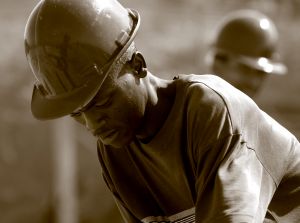 Most work-related injuries are caused by acute, single incident accidents. Absent the accident being the result of horseplay, injuries caused this way are typically compensable under Florida’s workers’ compensation system.
Most work-related injuries are caused by acute, single incident accidents. Absent the accident being the result of horseplay, injuries caused this way are typically compensable under Florida’s workers’ compensation system.
Are injuries caused by repetitive trauma over a period of time compensable? So long as the injured worker’s evidence establishes the following elements, the answer is Yes: (1) prolonged exposure; (2) the cumulative effect of which is injury or aggravation of a preexisting condition; and (3) the job subjected the injured worker to a hazard greater than that to which the public is exposed. See Festa v. Teleflex, Inc., 382 So.2d 122, 124 (Fla. 1st DCA 1980). (See, however, Rodriguez v. Frito-Lay, Inc., 600 So. 2d 1167 (Fla. 1st DCA 1992) which seems to do away with the requirement that the job subjected them to a hazard greater than that to which the public is exposed.) (See, also, University of Florida v. Massie, 602 So. 2d 516 (Fla, 1992), a Supreme Court case which provides that for a preexisting condition to be compensable, the condition must be aggravated by some non-routine, job related physical condition, or by some form of repeated physical trauma. By requiring physical stress, this case is aimed at limiting, if not altogether eliminating, mental stress as being enough to establish entitlement for aggravation of a preexisting condition.)
Significantly, in repetitive trauma cases the proof required to overcome the non-compensable presumption in 440.02(1), Fla. Stat., “clear and convincing evidence,” rather than the lower “preponderance of the evidence” standard. “Clear and convincing evidence” is evidence of a quality and character designed to produce in the judge of compensation claims’ mind a firm belief or conviction, without hesitation, as to the truth of the allegations.
The facts of the first workers’ compensation case I took to final merit hearing illustrate the law well. My client was a 60+ year old woman, who, we alleged, developed inververtebral cervical disc herniations through years of repetitive trauma from lifting box spring mattress frames. She worked in a warehouse and her job was to construct the frames, ranging in size from single to king, then physically lift and place each frame, one on top of the other, onto a dolly located beside her work station. She slowly developed severe cervical pain that forced her to retire. The employer and its insurance company denied responsibility for her injuries. Unable to point to a single incident to explain the disc herniations, we brought a Festa repetitive trauma claim against the employer/carrier.
Continue reading
 Florida Injury Attorney Blawg
Florida Injury Attorney Blawg


